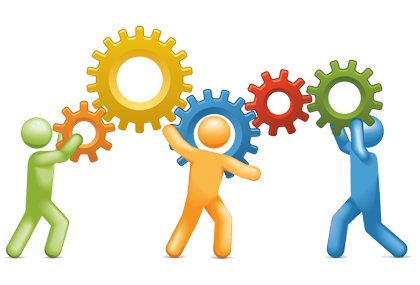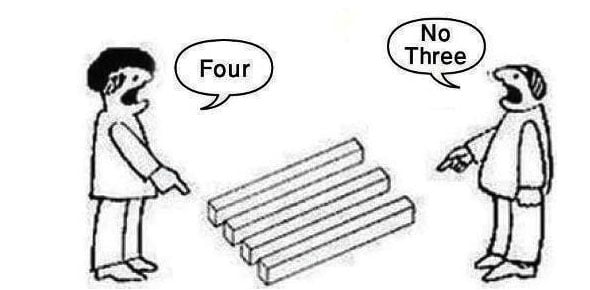In order for a meal to taste good, each individual ingredient needs to taste good on its own as well as compliment the flavours of the other ingredients when combined. For example, a pizza is composed of several different ingredients that individually taste good, yet when baked together, creates a delectable dish. However, too much of one ingredient, such as onions can overpower the other flavours, thus ruining the appetizing taste of pizza.
Applying this analogy to the business world, having a shared mindset and mutual understanding amongst individuals in the workplace is an essential element for establishing a healthy organizational culture. This will mitigate the potential for problematic situations of occuring within the organization such as abuse ofpower. According to the Pearson Seventh Canadian Edition textbook Organizational Behaviour: Concepts, Controversies, Applications, “A strong organizational culture can guide individual decisions and help everyone work together towards the same goals”, however this is not always an easy task to accomplish as seen in the video below:
Evidently, there is an unethical organizational culture fostering from Chef Ramsey who inflicts two types of bases of power on his employees: coercive power and expert power. He uses coercive power by instilling fear in his employees in attempt to get them to complete the tasks. In addition, he exerts expert power by arrogantly shouting out commands at his employees, as he is well-aware that he is more skilled and knowledgeable in the cooking realm than the other chefs in the kitchen.
Due to Chef Ramsay’s abuse of authority, he creates a high-stress and negative atmosphere which stimulates unethical workplace behaviour such as swearing. This harassment like atmosphere within the workplace hinders productivity as the employees feel devalued and unmotivated. Management Guru, Peter Drucker corroborates this statement as he claims that “Culture eats strategy for breakfast”. Regardless of the fact that the chefs are talented and well-versed in skills, they have difficulty executing the tasks up to a high standard because of the tensions linked to unethical organizational culture surrounding them.

As we discussed in our Comm 292 class, organizational culture is one of the most sustainable criteria that sets a company apart from one another. With a well-established, welcoming organizational culture, a sense of ‘warmth’ and ‘home’ is felt within the workplace. This tends to promote productivity and synergyamongst employees.
As a Swim Instructor and Lifeguard for the City of Delta, I fully support this ideology as I have witnessed how influential a rich organizational culture can impact motivation and productivity amongst employees. For example, myself and many of my coworkers consider our workplace to be like a second home. As a result, our jobs do not feel like an obligation but rather a fun activity that we all willingly want to do. This makes for an enjoyable, yet productive time.

Therefore, a well established organizational culture is a valuable ingredient that differentiates a bad workplace from a michelin star worthy workplace. Ultimately, organizational culture holds the power to dictate the extent of productivityachieved from employees.
Sources:
Taylor, A. (2017, June 10). Strategic planning facilitator Vancouver | Strategic plan consulting | SME Strategy. Strategic Planning and Management Insights. Retrieved March 14, 2018, from http://www.smestrategy.net/blog/what-does-culture-eats-strategy-mean-for-you-and-your-organization
Sismithin. (2009, November 26). Angry Rage Attack – Gordon Ramsay. Retrieved March 15, 2018, from https://www.youtube.com/watch?v=UjE-cBDFphQ&feature=youtu.be.
Happy Workplace [Digital image]. (n.d.). Retrieved from https://cvpco.com/wp-content/uploads/2015/03/happy-workplace1.jpg.
Culture Strategy [Digital image]. (n.d.). Retrieved from http://gomindshift.com/wp-content/uploads/2015/08/pacman_image.jpg.
 The objective of this activity was to create a plan that our OB group would partake in. Once a general idea for the plan had been established, each member could add details to this plan, by saying “Yes, but…”. This activity mimics the negative approach Sheldon took in collaborating with his friends. As experienced in this OB class activity and as seen in this clip, the “but” in collaborative work dampens progress. Although the “yes” at the start of the sentence is ensuring, the “but” cancels the tentative idea or plan that was initially created.
The objective of this activity was to create a plan that our OB group would partake in. Once a general idea for the plan had been established, each member could add details to this plan, by saying “Yes, but…”. This activity mimics the negative approach Sheldon took in collaborating with his friends. As experienced in this OB class activity and as seen in this clip, the “but” in collaborative work dampens progress. Although the “yes” at the start of the sentence is ensuring, the “but” cancels the tentative idea or plan that was initially created.
 Unfortunately, there are many factors that distort perception. According to Dr. Amir Abou Elgna, Vice Dean of College of Business Administration,
Unfortunately, there are many factors that distort perception. According to Dr. Amir Abou Elgna, Vice Dean of College of Business Administration,  Thus knowing each individuals’ personal values allows for the group to effectively implement shared values. By doing so, core valueswithin the group will be established, thus facilitating ease for communication and collaboration for future team projects.
Thus knowing each individuals’ personal values allows for the group to effectively implement shared values. By doing so, core valueswithin the group will be established, thus facilitating ease for communication and collaboration for future team projects.


 Consequently, McDonald’s evolved its menu to cater towards the new consumer preference of “healthy living”. Personally, I believe that this was a clever way to differentiate McDonald’s from other fast food chains, while accommodating the wants of consumers. Moreover, this showcases the importance of product adaptation for the continual success of a company. Despite McDonald’s already have a strong stance in the market, the company had to adapt to accommodate evolving consumer wants in order to avoid extensive decrease in revenue sales.
Consequently, McDonald’s evolved its menu to cater towards the new consumer preference of “healthy living”. Personally, I believe that this was a clever way to differentiate McDonald’s from other fast food chains, while accommodating the wants of consumers. Moreover, this showcases the importance of product adaptation for the continual success of a company. Despite McDonald’s already have a strong stance in the market, the company had to adapt to accommodate evolving consumer wants in order to avoid extensive decrease in revenue sales. 



